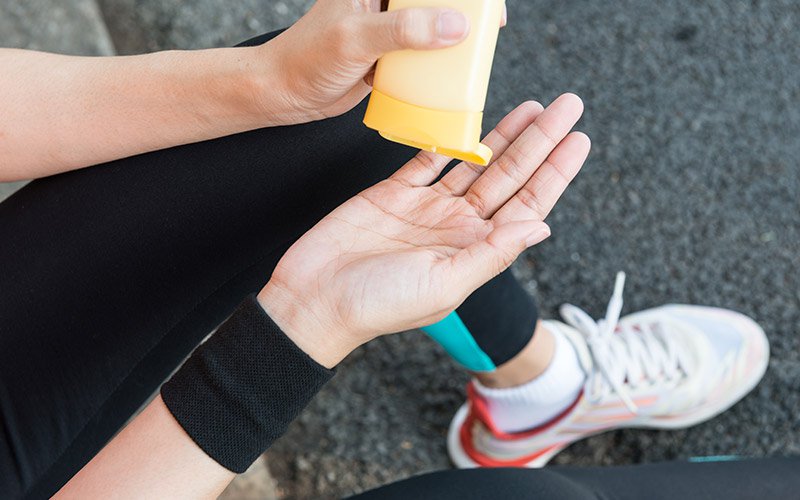Skin cancer is the most common form of cancer in the U.S. In fact, according to the Skin Cancer Foundation, more people are diagnosed with skin cancer every year in the U.S. than with all other cancers — combined.
With skin cancer continuing to affect so many Americans, it often appears that the message about how to prevent it still isn’t being heard.
“Skin cancer continues to be a problem, despite all the awareness and educational programs to help the public become more informed about how to prevent it,” says Dr. Howard Luber, a board-certified dermatologist at Southwest Skin Specialists Phoenix Tatum Blvd. in Arizona. “There are so many habits that contribute to the risk of skin cancer that could be avoided. What it really comes down to is becoming more aware and diligent about our daily practices.”
The Simple Practice to Prevent Skin Cancer
While there are many tips for preventing skin cancer, the top one is a simple but important piece of advice you’ve been hearing since childhood: wear your sunscreen.
“People tend to think about sunscreen mostly when they want to prevent sunburn, but that is just a small part of what sunscreen is essential for,” Dr. Luber says. “Wearing sunscreen is critical in reducing damage from the sun. Even when you don’t see a sunburn, if you’re not wearing sunscreen, you are exposing your skin to sun damage.”
In fact, damage from the sun occurs over your lifetime, not in short spurts. Those days at the beach or on a boat might show up in the form of a sunburn or tan, but it’s the daily walk on your lunch break or morning run that keeps the meter running on sun exposure.
“That’s why it’s important for you to put on sunscreen every day before you leave your house, and reapply it every two or three hours if you’re outside,” Dr. Luber says. “Putting on sunscreen should be as much a part of your daily routine as brushing your teeth.”
Don’t Let the Cool Days Fool You
As summer turns into fall, the days get cooler and the sun’s rays feel less intense, so it’s common for people to become less diligent about sunscreen application.
“That’s one of the biggest mistakes people make because we tend to associate sun damage with heat and sunshine,” Dr. Luber says. “In fact, it’s really about exposure to UVA and UVB rays, both of which are cancer-causing and are present year-round.”
Regardless of whether the sky is sunny or overcast, you’re getting ultraviolet exposure. And your number-one defense against it is sunscreen.
Just as in the summer months, you should look for a broad spectrum formula with a SPF (sun protection factor) of 30 to 50, or one that is labeled as providing UVA/UVB protection. It should also include zinc oxide and titanium oxide as active ingredients. (Look here for specific brand recommendations from dermatologists.)
As the weather changes further, protection from sunscreen becomes even more important. When snow and ice cover the ground, the sun’s rays reflect off it and cause an even greater risk of damage to your skin.
“The bottom line is, there’s really no time of year when it’s advisable to go outside without sunscreen,” Dr. Luber says.
Extra Precautions Provide Extra Prevention
Beyond wearing your sunscreen daily, there are a few more ways to make sure you don’t let your guard down when it comes to protecting your skin from sun damage.
While sunscreen provides your first line of defense against harmful rays, there are more things you can do to protect yourself year-round. They include:
- Wear sun-protective clothing. The good news about cooler weather is that you’re more likely to cover up, which is a good way to shield your skin. Look for synthetic colors and tight knits instead of cotton, and go for dark or vibrant colors, which do a better job of lowering your exposure than lights and whites. Even better, take it a step further and wear UPF-rated clothing that blocks the sun’s rays.
- Grab a hat. Again, another perk of fall and winter is that you’re more likely to keep your head covered. Choose one with a wide brim to help keep your face protected.
- Avoid the sun from 10 a.m. to 3 p.m. Remember, just because the sun doesn’t feel as intense, it doesn’t mean your skin isn’t getting damaged. However, this remains the time of the day when the sun’s rays are strongest, regardless of the season.
- Keep your sunglasses handy. Look for sunglasses that filter UV light. Even on overcast days, UV rays can break through the clouds and cause damage.
- Remember your lips! Sun damage can happen to any part of your skin that’s exposed, and that includes your lips. Keep your lip balm handy (and make sure it has at least SPF 15 to provide adequate protection).
Check In With Your Skin
Even when you are taking all the right precautions to protect yourself from the sun, it’s important to see your dermatologist at least once a year for a full-body skin check and do monthly self-examinations to look for any changes in your skin.
Learning to take care of your skin year-round will ensure that it stays healthy and younger looking longer. Sunscreen is your best ally when it comes to preventing skin cancer and sun damage.
“It’s such a simple practice, and when people make it part of their routine, they’re going to improve the overall health of their skin,” Dr. Luber says. “It’s something they’ll be glad they did years from now.”
Stay on top of skin cancer prevention and early detection by scheduling an appointment for your annual skin exam today.
Find a location near me
or

